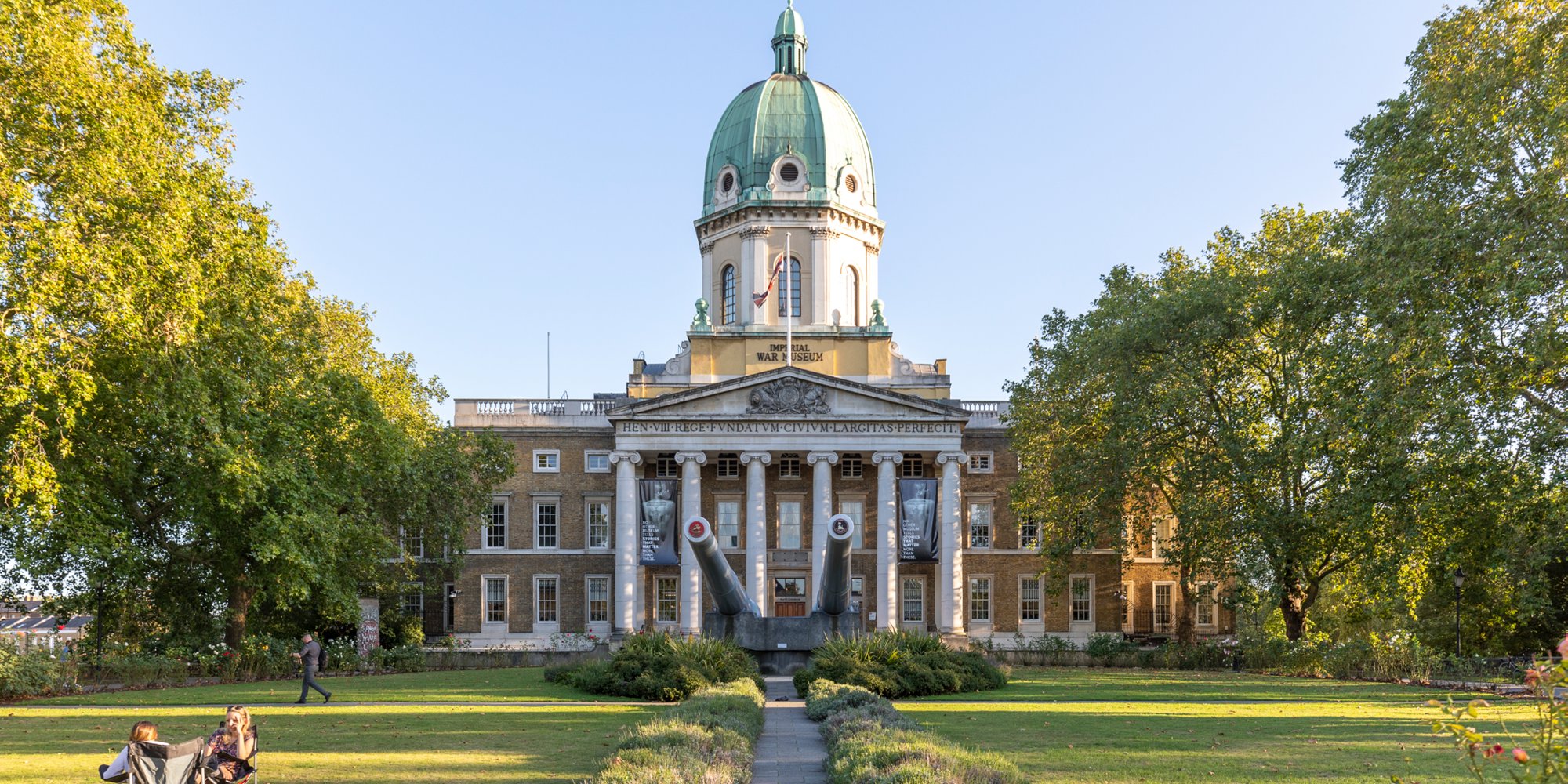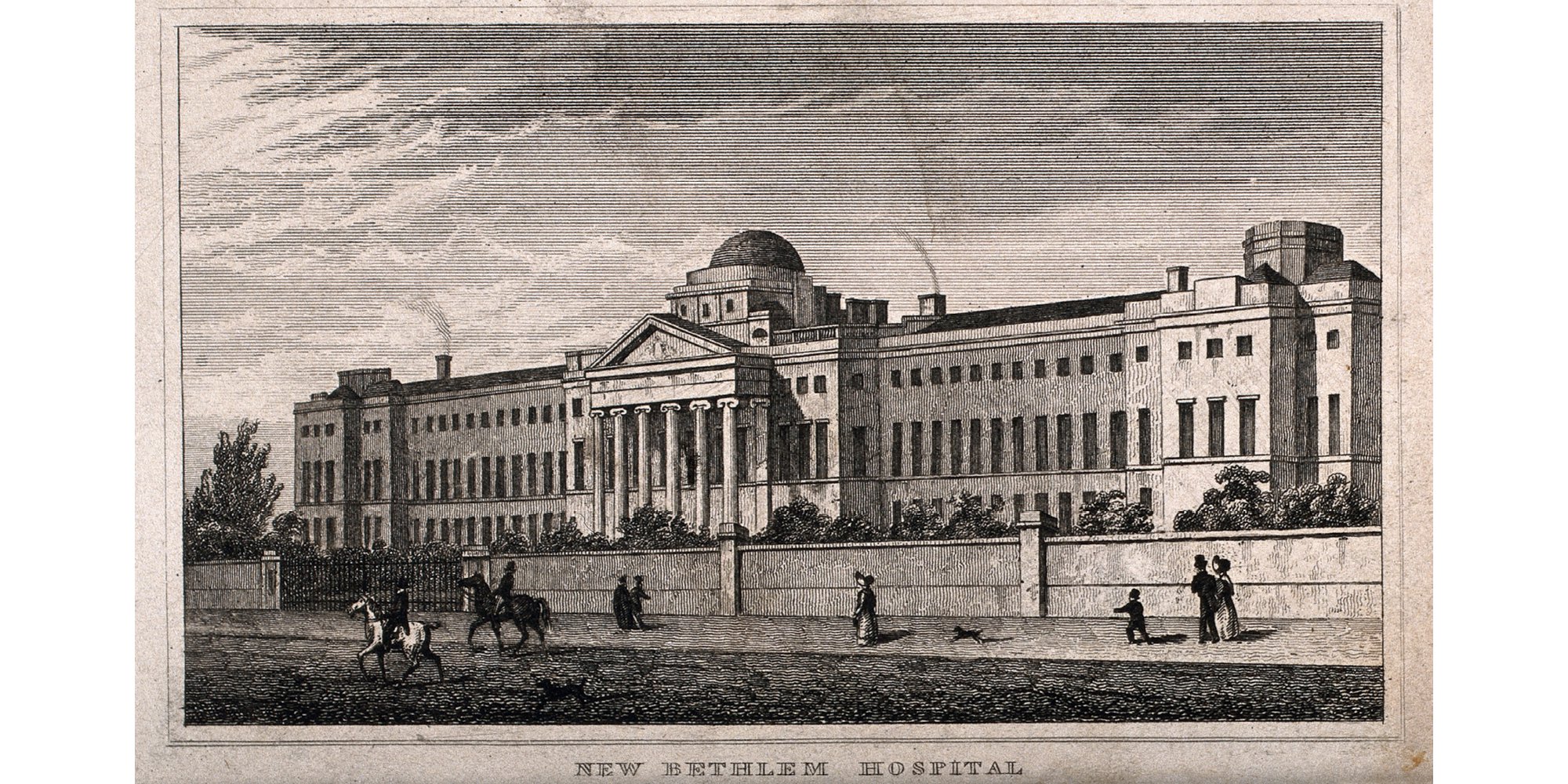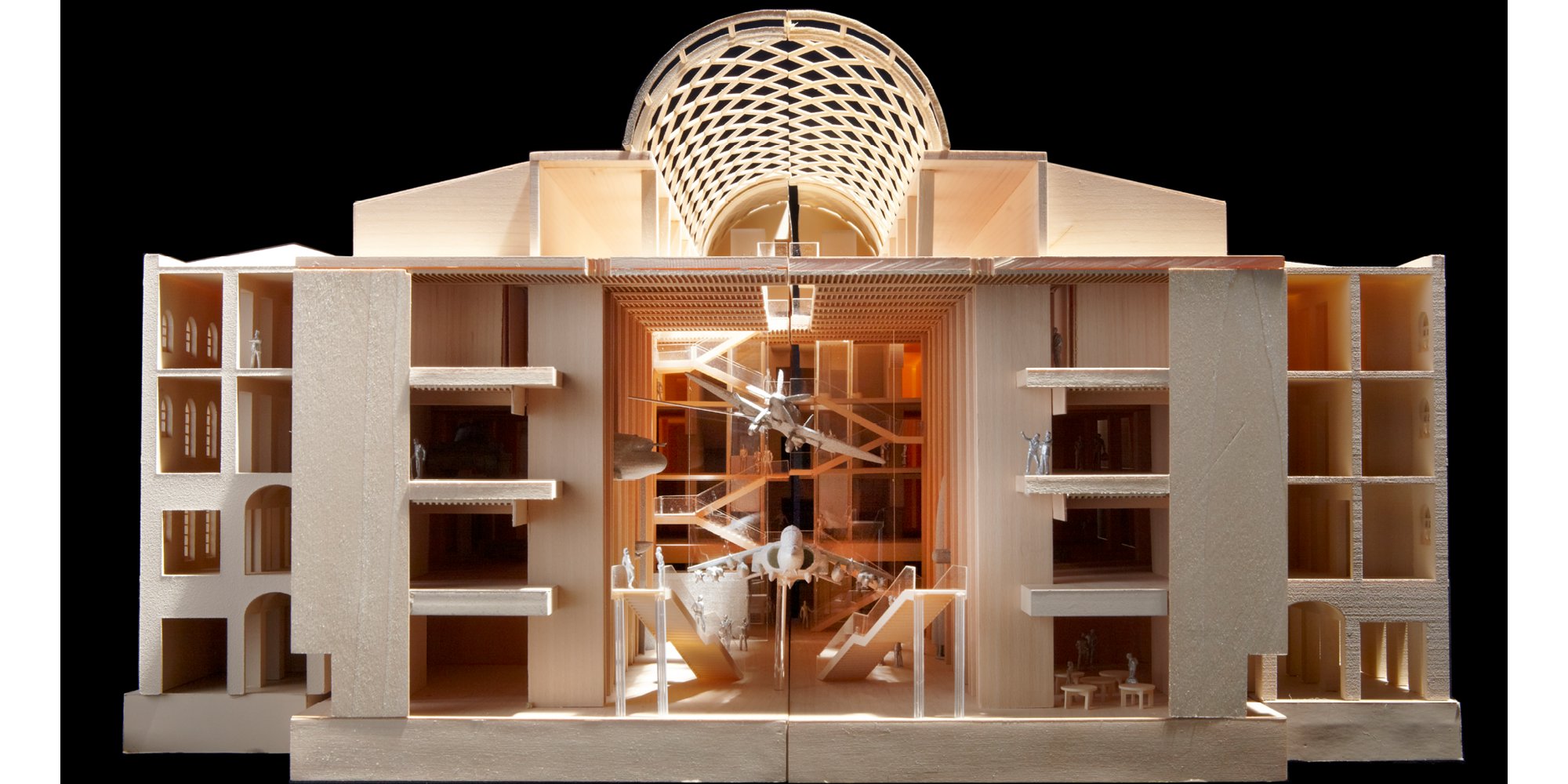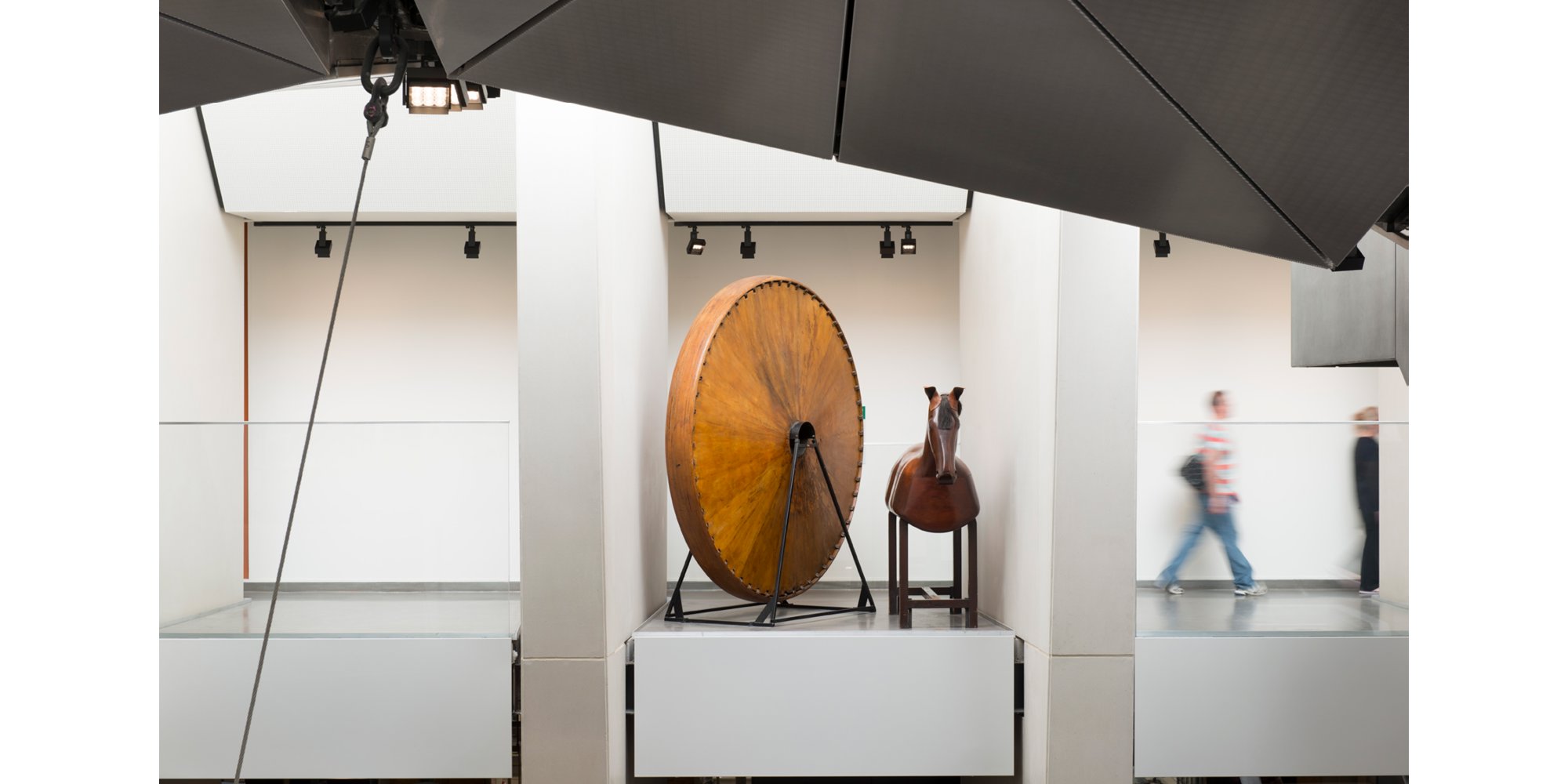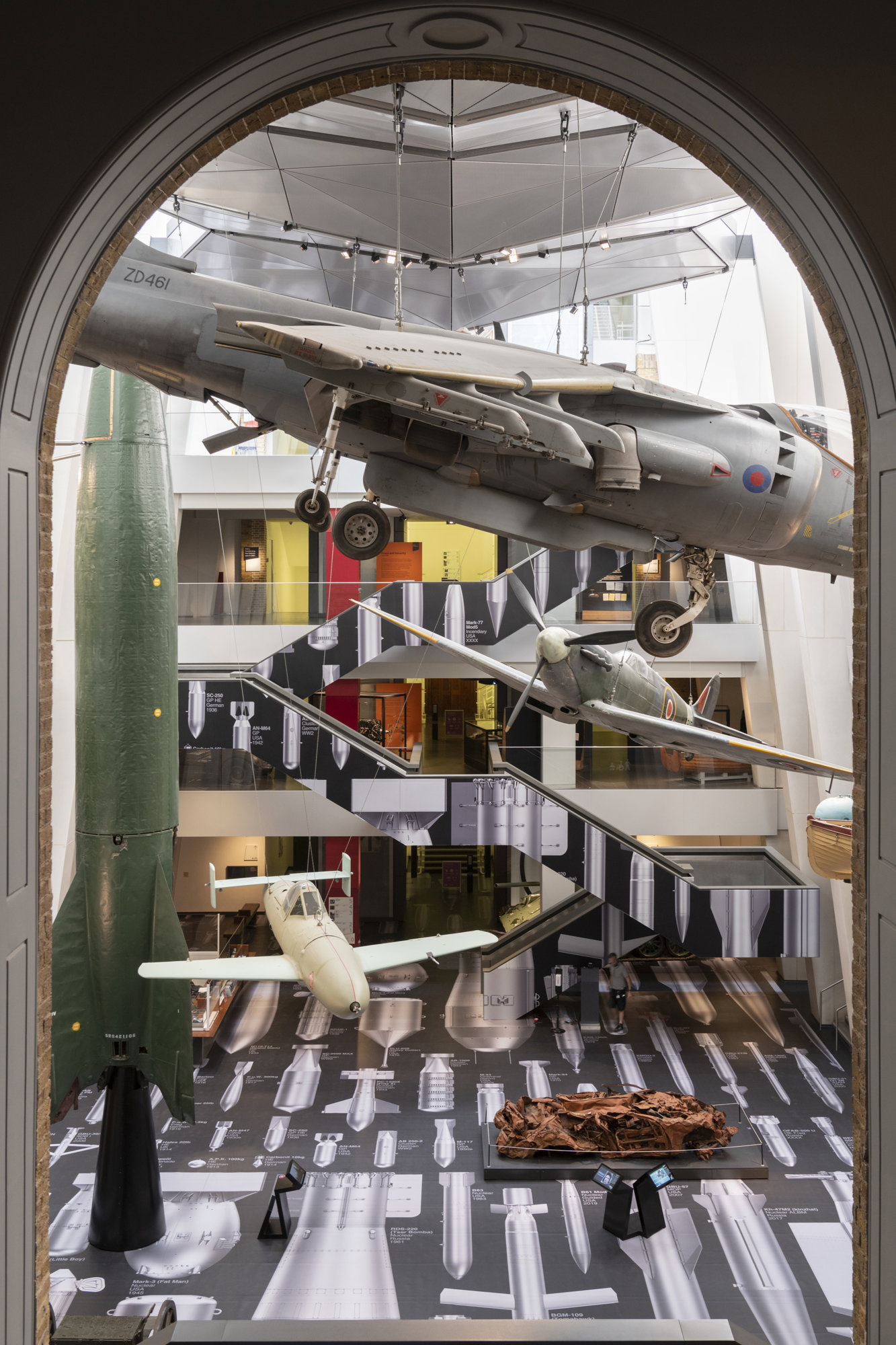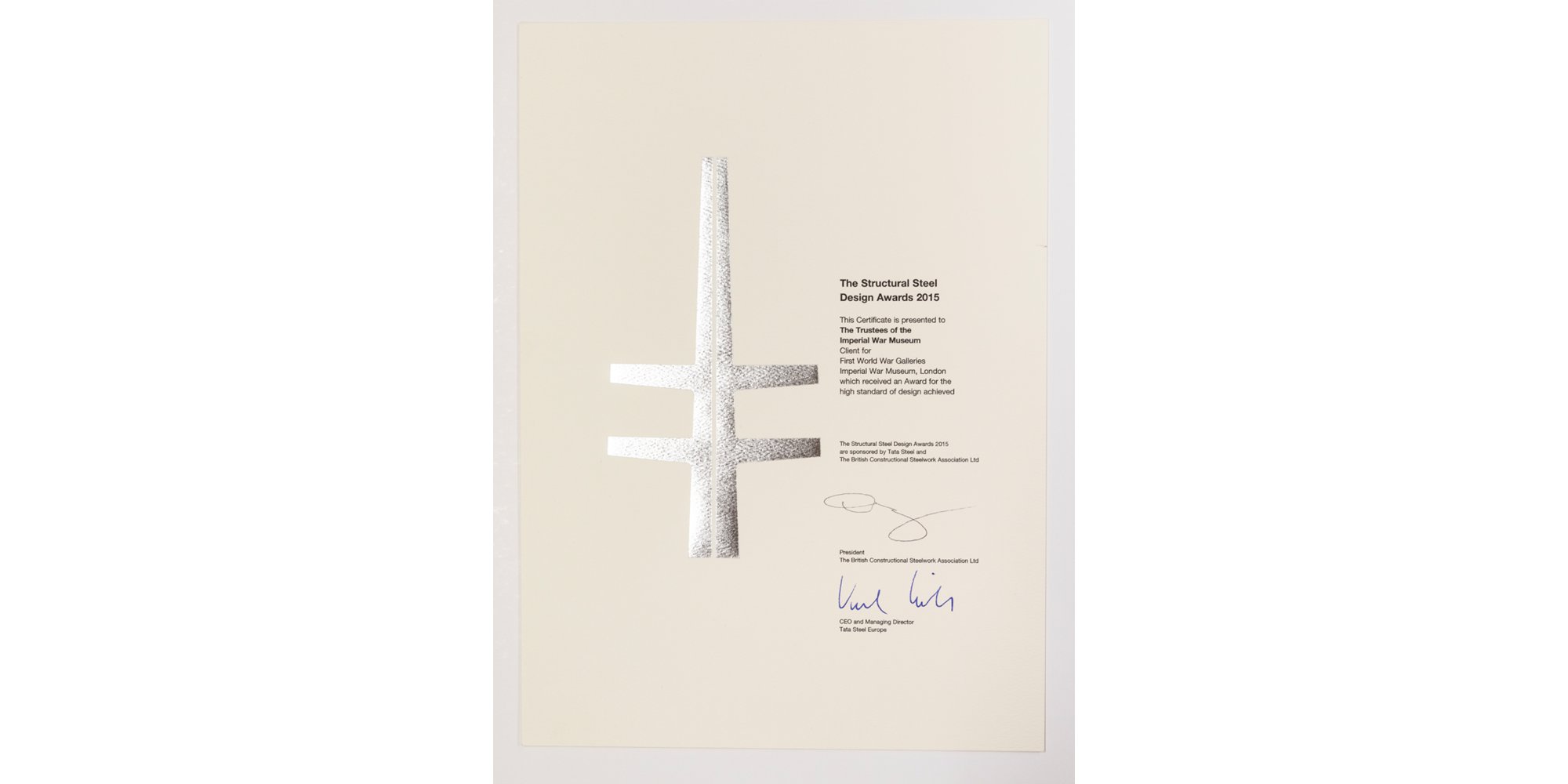International Museum Day celebrates the continued work of museums and their caretakers across the globe.
In London alone, Foster + Partners has renovated several museums – including The Sackler Galleries in the Royal Academy of Arts (1991) and Great Court at the British Museum (2000). Beyond this, the practice has also completed a range of global projects: including Datong Art Museum (China, 2021), Norton Museum of Art (West Palm Beach, United States, 2021) and Narbo Via (Narbonne, France, 2021).
This year’s International Museums Day coincides with the tenth anniversary of Foster + Partners’ renovation of the Imperial War Museum in London. Taking this opportunity to visit the practice’s internal archives and look back over the project is a reminder that a museum is not only a space for storing and displaying history, but also an active participant in it.









